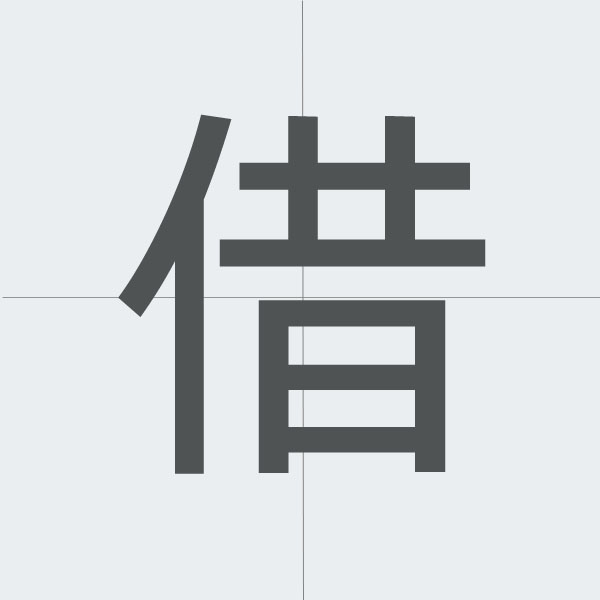
The Kanji: 借 (Shaku / Ka)
The kanji 借 (read as Shaku or ka) carries the core meaning of "to borrow" or "to rent." It is composed of the radical 亻(person) and 昔 (old times), creating the idea of a person receiving something with a connection to the past—implying a temporary transfer that will be returned, thus "borrowing."
Common Words & Example Sentences
1. 借りる (kariru)
Meaning: To borrow; to rent.
Example Sentence: 図書館で本を借りました。
(Toshokan de hon o karimashita.)
"I borrowed a book from the library."
2. 借金 (shakkin)
Meaning: Debt; loan (literally "borrowed money").
Example Sentence: 借金を返す必要があります。
(Shakkin o kaesu hitsuyō ga arimasu.)
"I need to pay back my debt."
3. 貸借 (taishaku)
Meaning: Lending and borrowing; credit and debit.
Example Sentence: 会社の貸借対照表を確認した。
(Kaisha no taishaku taishōhyō o kakunin shita.)
"I checked the company's balance sheet (貸借対照表)."
4. 借用 (shakuyō)
Meaning: Borrowing (often of abstract things like words).
Example Sentence: 日本語には多くの借用語があります。
(Nihongo ni wa ōku no shakuyōgo ga arimasu.)
"There are many borrowed words in Japanese."
In summary, 借 is an essential kanji representing the concept of temporary acquisition—from borrowing items (借りる) to financial obligations (借金). It reflects a fundamental social and economic interaction in daily life.